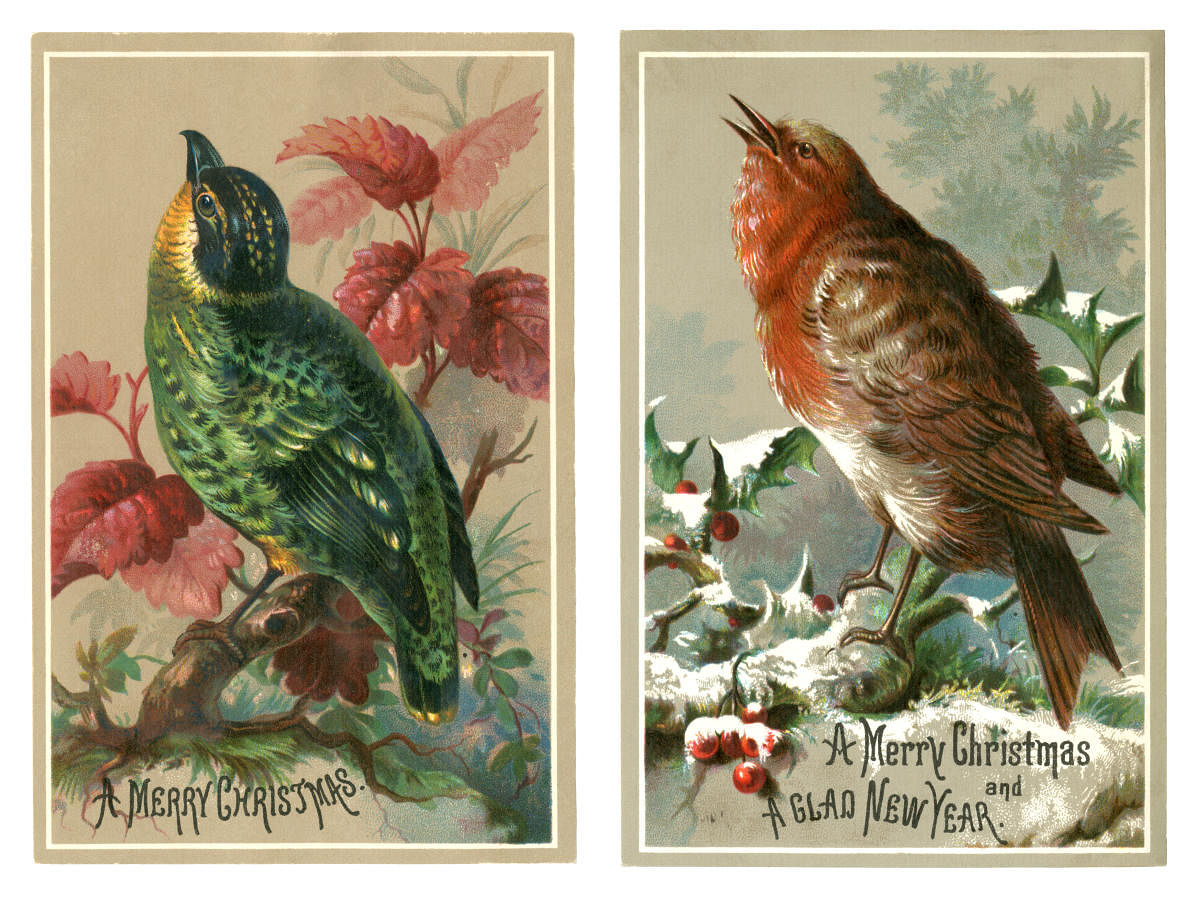
Circa 1843: Sir Henry Cole sits in his large oval office slightly pensive gazing at the snowfall of November. As one of the prominent members of the Victorian royal court and the founder of the iconic Victoria and Albert Museum in London, the prominent educator often regales at having a large, extremely influential social circle — but not today. His worry is the festive season ahead — which as per Victorian ethics demanded that he write long, personalised letters to each of his friends/ acquaintances, with the longest to the queen — and then revert to ones that came in with an equally well-thought, long letter. It was an era where just wishing ‘same to you’ was considered ‘un-British’ — and could earn you a punishment. The answer to Sir Cole’s quandary came in the form of a known narrative painter John Callcott Horsley.
Cole approached him with a triptych showing a family at the table celebrating the holiday flanked by images of people helping the poor, which was inspired by Charles Dickens’ A Christmas Carol. There were 1,000 prints made of the card, of which a majority were sent to Cole’s social circle, while few were sold at a penny each for those who wanted as the patron of art would say, “send cheer with just a line.” Cole’s ingenuity was a breakthrough for two reasons: One, it created the first personalised Christmas card with a standard greeting ‘A Merry Christmas and A Happy New Year To You”; and second, it started the tradition of buying cards and using the post — which then had introduced the ‘penny post’ system of using a stamp of one penny — to send season’s greetings to dear ones, far, far away.
The card with a family celebrating the festive season with a banquet did catapult Cole and Horsley as the pioneers of Christmas card sending tradition, whose design would be followed for the next two centuries, but it did come with its share of controversy. The card that showcased the perks of the affluent in the society got into slightly troubled waters for showing children having wine. Some blamed Cole, a prominent educator, for advocating early age drinking. But that did little to the rejoicing that Cole’s card had in his social circle where it was hailed as an “artistic expression to the moral and social code of Great Britain.” After all, say historians, “it was nothing compared to the crazy, dark humoured postcards sent earlier by the aristocrats.” Two rare copies of the 1843 greeting card are now up for auction.
Fascinatingly, cards during the early Victorian era were very much a personification of the thought process and excelled in showcasing crude, dark humour with the drawings mostly oscillating between a dead Robin (incidentally postmen then were called Robins too) to tribes killing a beast to Santa kidnapping kids or feasting on someone’s head (most likely women). The quirky ones would have a clown shown poking an officer with a pitchfork or a drunken royal amidst “loose” women hanging on to the shoulder of the Krampus. The slightly conservative ones would send a photo painting where they would be standing on top of a recent hunt or one of the events, they were part of. Such was the popularity of the sarcasm and crude humour of the card/postcard/letterhead that painters were commissioned months in advance to create that perfect pictorial of the year — after all, it guaranteed you would be spoken about.
Cole’s Christmas Card while slowly put a cork on the Krampus, dead Robins and the mouse feasting on a dead ‘she pig’ on cards, it did objectify women as the ‘favourite squeeze’ — which then seemed to be a befitting reply to the likes of Jane Addison, who was the first woman in the UK to win a divorce against her husband. Although Christmas cards became a tradition post-Cole who remained privy to the rich and famous who used it to showcase their thoughts — often the man’s point of view where even cards showed them in all finery and perfection. Contrary to the UK, the US card culture began in 1875 with Louis Prang, a Prussian immigrant with a print shop near Boston. Prang cards took a more artistic, subtle approach by choosing a flower for his cards. In doing so, he set the tone of the first generation of Christmas cards in the US, which in 1912 took the war theme and in 1915 introduced the modern style of card making with the Hall Brothers, who eventually commissioned known artists like Salvador Dali, Grandma Moses and Norman Rockwell, who designed a series of Christmas cards for Hallmark. Thus, paving the way for the most iconic Christmas card featuring the three cupids, which since its print in 1977 has sold over 34 million copies. However, even with its realism approach, the greeting cards in America too fell for the male charm of their UK counterparts, who courtesy Victorian artist Kate Greenaway was warming up to Christmas cards showing idyllic images of children dressed in festive holiday garb. Produced by stationer Marcus Ward who also collaborated with another artist Walter Crane, who first brought in Santa Claus in the cards riding a cart pulled by a contingent of elves, these cards remained a mirror to the society that still preferred the man’s narrative. So much so that when women were drawn in Christmas cards they were mostly as objects of entertainment, pleasure or as home-makers. Fascinatingly with offset printing and Hallmark, Christmas cards took on more Christmas centred themes like Baby Jesus & Mother Mary, Santa Claus, and the likes, the male-centric narrative continued, albeit with much subtlety.